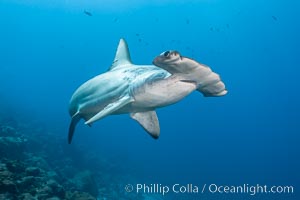
Scalloped hammerhead shark swims over a reef in the Galapagos Islands. The hammerheads eyes and other sensor organs are placed far apart on its wide head to give the shark greater ability to sense the location of prey.
Species: Scalloped hammerhead shark, Sphyrna lewini
Location: Wolf Island, Galapagos Islands, Ecuador
Image ID: 16246
Species: Scalloped hammerhead shark, Sphyrna lewini
Location: Wolf Island, Galapagos Islands, Ecuador
Image ID: 16246
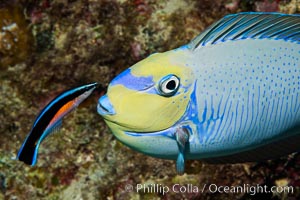
Bignose Unicornfish, Naso vlamingii, being cleaned by a small wrasse, Fiji.
Species: Bignose unicornfish, Naso vlamingii
Location: Namena Marine Reserve, Namena Island, Fiji
Image ID: 34735
Species: Bignose unicornfish, Naso vlamingii
Location: Namena Marine Reserve, Namena Island, Fiji
Image ID: 34735
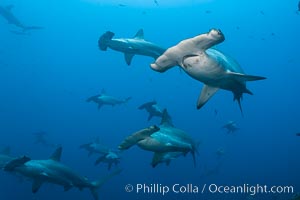
Hammerhead sharks swim in a school underwater at Wolf Island in the Galapagos archipelago. The hammerheads eyes and other sensor organs are placed far apart on its wide head to give the shark greater ability to sense the location of prey.
Species: Scalloped hammerhead shark, Sphyrna lewini
Location: Wolf Island, Galapagos Islands, Ecuador
Image ID: 16271
Species: Scalloped hammerhead shark, Sphyrna lewini
Location: Wolf Island, Galapagos Islands, Ecuador
Image ID: 16271
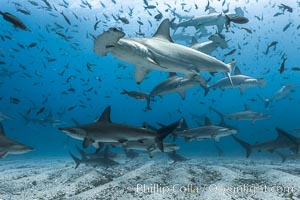
Hammerhead sharks, schooling over sand, Darwin Island, Galapagos.
Species: Scalloped hammerhead shark, Sphyrna lewini
Location: Darwin Island, Galapagos Islands, Ecuador
Image ID: 16255
Species: Scalloped hammerhead shark, Sphyrna lewini
Location: Darwin Island, Galapagos Islands, Ecuador
Image ID: 16255
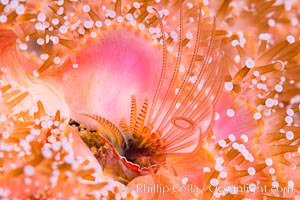
Acorn Barnacle extends to feed in ocean current, amid colony of Corynactis anemones.
Species: Acorn barnacle, Strawberry anemone, Corynactis californica, Megabalanus californicus
Location: San Diego, California
Image ID: 33455
Species: Acorn barnacle, Strawberry anemone, Corynactis californica, Megabalanus californicus
Location: San Diego, California
Image ID: 33455
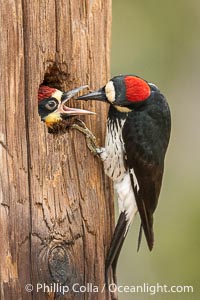
Acorn Woodpecker Adult Feeding Chick at the Nest, Lake Hodges.
Location: Lake Hodges, San Diego, California
Image ID: 39395
Location: Lake Hodges, San Diego, California
Image ID: 39395
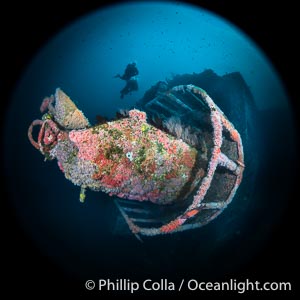
Divers Swim Over the Wreck of the HMCS Yukon in San Diego. Deliberately sunk in 2000 at San Diego's Wreck Alley to form an artifical reef, the HMCS Yukon is a 366-foot-long former Canadian destroyer. It is encrusted with a variety of invertebrate life, including Cornyactis anemones which provide much of the color seen here.
Location: San Diego, California
Image ID: 39474
Location: San Diego, California
Image ID: 39474
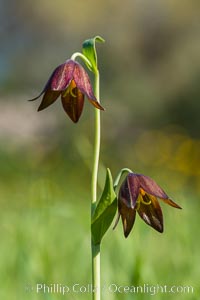
Chocolate lily growing among grasses on oak-covered hillsides. The chocolate lily is a herbaceous perennial monocot that is increasingly difficult to find in the wild due to habitat loss. The flower is a striking brown color akin to the color of chocolate.
Location: Santa Rosa Plateau Ecological Reserve, Murrieta, California
Image ID: 33151
Location: Santa Rosa Plateau Ecological Reserve, Murrieta, California
Image ID: 33151
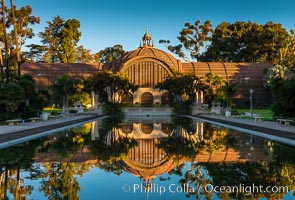
The Botanical Building in Balboa Park, San Diego. The Botanical Building, at 250 feet long by 75 feet wide and 60 feet tall, was the largest wood lath structure in the world when it was built in 1915 for the Panama-California Exposition. The Botanical Building, located on the Prado, west of the Museum of Art, contains about 2,100 permanent tropical plants along with changing seasonal flowers. The Lily Pond, just south of the Botanical Building, is an eloquent example of the use of reflecting pools to enhance architecture. The 193' by 43' foot pond and smaller companion pool were originally referred to as Las Lagunas de las Flores (The Lakes of the Flowers) and were designed as aquatic gardens. The pools contain exotic water lilies and lotus which bloom spring through fall.
Location: Balboa Park, San Diego, California
Image ID: 28823
Location: Balboa Park, San Diego, California
Image ID: 28823
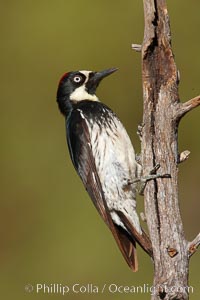
Acorn woodpecker, female.
Species: Acorn woodpecker, Melanerpes formicivorus
Location: Madera Canyon Recreation Area, Green Valley, Arizona
Image ID: 22906
Species: Acorn woodpecker, Melanerpes formicivorus
Location: Madera Canyon Recreation Area, Green Valley, Arizona
Image ID: 22906
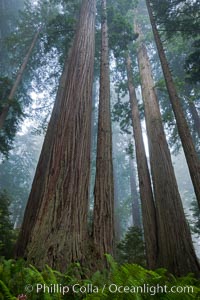
Giant redwood, Lady Bird Johnson Grove, Redwood National Park. The coastal redwood, or simply 'redwood', is the tallest tree on Earth, reaching a height of 379' and living 3500 years or more. It is native to coastal California and the southwestern corner of Oregon within the United States, but most concentrated in Redwood National and State Parks in Northern California, found close to the coast where moisture and soil conditions can support its unique size and growth requirements.
Species: California redwood, Coast redwood, Giant redwood, Sequoia sempervirens
Location: Redwood National Park, California
Image ID: 25795
Species: California redwood, Coast redwood, Giant redwood, Sequoia sempervirens
Location: Redwood National Park, California
Image ID: 25795
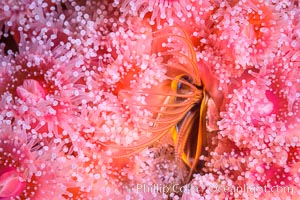
Acorn Barnacle extends to feed in ocean current, amid colony of Corynactis anemones.
Species: Acorn barnacle, Strawberry anemone, Corynactis californica, Megabalanus californicus
Location: San Diego, California
Image ID: 33473
Species: Acorn barnacle, Strawberry anemone, Corynactis californica, Megabalanus californicus
Location: San Diego, California
Image ID: 33473
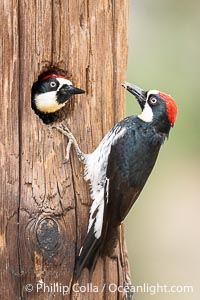
Two Adult Acorn Woodpeckers in their Nest Hole, Lake Hodges.
Location: Lake Hodges, San Diego, California
Image ID: 39397
Location: Lake Hodges, San Diego, California
Image ID: 39397
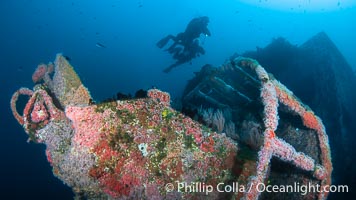
Divers Swim Over the Wreck of the HMCS Yukon in San Diego. Deliberately sunk in 2000 at San Diego's Wreck Alley to form an artifical reef, the HMCS Yukon is a 366-foot-long former Canadian destroyer. It is encrusted with a variety of invertebrate life, including Cornyactis anemones which provide much of the color seen here.
Location: San Diego, California
Image ID: 39475
Location: San Diego, California
Image ID: 39475
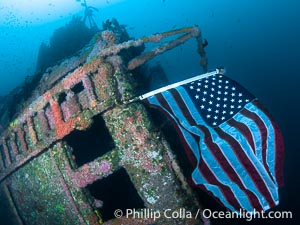
American Flag Flying Over The Wreck of the HMCS Yukon in San Diego. Deliberately sunk in 2000 as part of San Diego's Wreck Alley to form an artifical reef, the HMCS Yukon is a 366-foot-long former Canadian destroyer. It is encrusted with a variety of invertebrate life, including Cornyactis anemones which provide much of the color seen here.
Location: San Diego, California
Image ID: 39476
Location: San Diego, California
Image ID: 39476
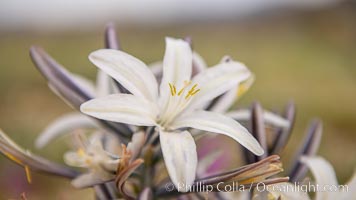
Desert Lily Hersperocallis undulata, Anza Borrego Desert State Park.
Species: Desert lily, Hesperocallis undulata
Location: Anza-Borrego Desert State Park, Borrego Springs, California
Image ID: 35194
Species: Desert lily, Hesperocallis undulata
Location: Anza-Borrego Desert State Park, Borrego Springs, California
Image ID: 35194
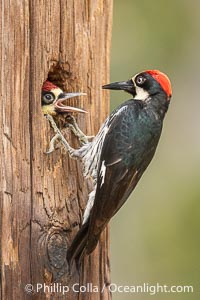
Acorn Woodpecker Adult Feeding Chick at the Nest, Lake Hodges.
Location: Lake Hodges, San Diego, California
Image ID: 39396
Location: Lake Hodges, San Diego, California
Image ID: 39396
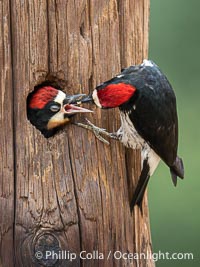
Acorn Woodpecker Adult Feeding Chick at Nest.
Location: Lake Hodges, San Diego, California
Image ID: 39413
Location: Lake Hodges, San Diego, California
Image ID: 39413
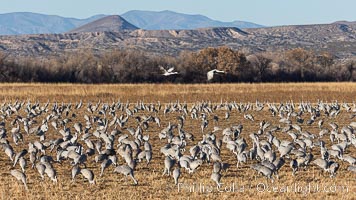
Sandhill crane and corn fields, Bosque del Apache.
Species: Sandhill crane, Grus canadensis
Location: Bosque del Apache National Wildlife Refuge, Socorro, New Mexico
Image ID: 38740
Species: Sandhill crane, Grus canadensis
Location: Bosque del Apache National Wildlife Refuge, Socorro, New Mexico
Image ID: 38740
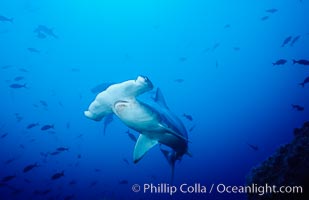
Scalloped hammerhead shark swims underwater at Cocos Island. The hammerheads eyes and other sensor organs are placed far apart on its wide head to give the shark greater ability to sense the location of prey.
Species: Scalloped hammerhead shark, Sphyrna lewini
Location: Cocos Island, Costa Rica
Image ID: 03192
Species: Scalloped hammerhead shark, Sphyrna lewini
Location: Cocos Island, Costa Rica
Image ID: 03192
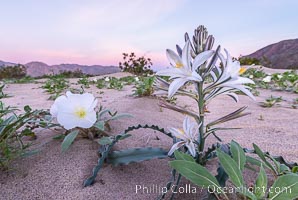
Desert Lily in bloom, Anza Borrego Desert State Park.
Species: Desert lily, Hesperocallis undulata
Location: Anza-Borrego Desert State Park, Borrego Springs, California
Image ID: 33124
Species: Desert lily, Hesperocallis undulata
Location: Anza-Borrego Desert State Park, Borrego Springs, California
Image ID: 33124
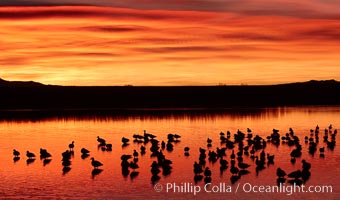
Snow geese rest on a still pond in rich orange and yellow sunrise light. These geese have spent their night's rest on the main empoundment and will leave around sunrise to feed in nearby corn fields.
Species: Snow goose, Chen caerulescens
Location: Bosque del Apache National Wildlife Refuge, Socorro, New Mexico
Image ID: 21802
Species: Snow goose, Chen caerulescens
Location: Bosque del Apache National Wildlife Refuge, Socorro, New Mexico
Image ID: 21802
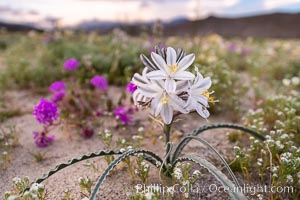
Desert Lily Hersperocallis undulata, Anza Borrego Desert State Park.
Species: Desert lily, Hesperocallis undulata
Location: Anza-Borrego Desert State Park, Borrego Springs, California
Image ID: 35170
Species: Desert lily, Hesperocallis undulata
Location: Anza-Borrego Desert State Park, Borrego Springs, California
Image ID: 35170
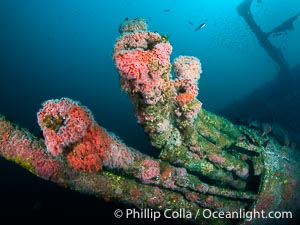
The Wreck of the HMCS Yukon in San Diego. Deliberately sunk in 2000 as part of San Diego's Wreck Alley to form an artifical reef, the HMCS Yukon is a 366-foot-long former Canadian destroyer. It is encrusted with a variety of invertebrate life, including Cornyactis anemones which provide much of the color seen here.
Location: San Diego, California
Image ID: 39470
Location: San Diego, California
Image ID: 39470
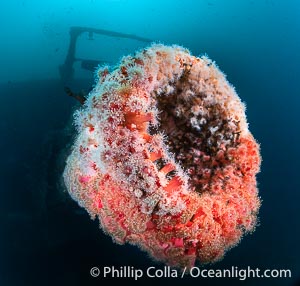
Corynactis californica anemones carpet substructure of the Wreck of the HMCS Yukon in San Diego. The shipwrecks of Wreck Alley are a great place to see vast expanses of rainbow-hued Corynactis anemones. Deliberately sunk in 2000 as part of San Diego's Wreck Alley to form an artifical reef, the HMCS Yukon is a 366-foot-long former Canadian destroyer. It is encrusted with a variety of invertebrate life, including Cornyactis anemones which provide much of the color seen here.
Species: Strawberry anemone, Corynactis californica
Location: San Diego, California
Image ID: 39471
Species: Strawberry anemone, Corynactis californica
Location: San Diego, California
Image ID: 39471
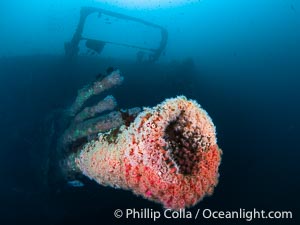
The Wreck of the HMCS Yukon in San Diego. Deliberately sunk in 2000 as part of San Diego's Wreck Alley to form an artifical reef, the HMCS Yukon is a 366-foot-long former Canadian destroyer. It is encrusted with a variety of invertebrate life, including Cornyactis anemones which provide much of the color seen here.
Location: San Diego, California
Image ID: 39472
Location: San Diego, California
Image ID: 39472
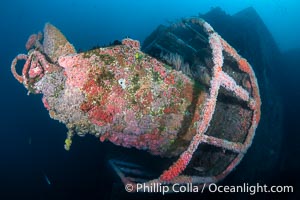
The Wreck of the HMCS Yukon in San Diego. Deliberately sunk in 2000 as part of San Diego's Wreck Alley to form an artifical reef, the HMCS Yukon is a 366-foot-long former Canadian destroyer. It is encrusted with a variety of invertebrate life, including Cornyactis anemones which provide much of the color seen here.
Location: San Diego, California
Image ID: 39473
Location: San Diego, California
Image ID: 39473
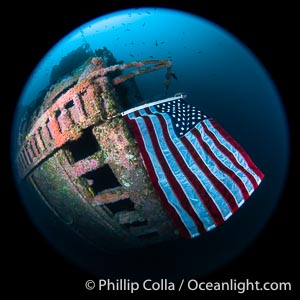
American Flag Flying Over The Wreck of the HMCS Yukon in San Diego. Deliberately sunk in 2000 as part of San Diego's Wreck Alley to form an artifical reef, the HMCS Yukon is a 366-foot-long former Canadian destroyer. It is encrusted with a variety of invertebrate life, including Cornyactis anemones which provide much of the color seen here.
Location: San Diego, California
Image ID: 39477
Location: San Diego, California
Image ID: 39477
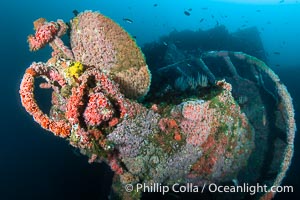
The Wreck of the HMCS Yukon in San Diego. Deliberately sunk in 2000 as part of San Diego's Wreck Alley to form an artifical reef, the HMCS Yukon is a 366-foot-long former Canadian destroyer. It is encrusted with a variety of invertebrate life, including Cornyactis anemones which provide much of the color seen here.
Location: San Diego, California
Image ID: 39478
Location: San Diego, California
Image ID: 39478
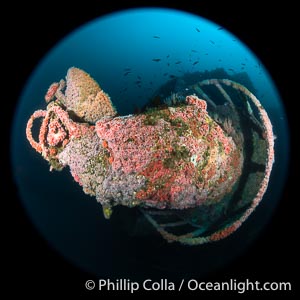
The Wreck of the HMCS Yukon in San Diego. Deliberately sunk in 2000 as part of San Diego's Wreck Alley to form an artifical reef, the HMCS Yukon is a 366-foot-long former Canadian destroyer. It is encrusted with a variety of invertebrate life, including Cornyactis anemones which provide much of the color seen here.
Location: San Diego, California
Image ID: 39479
Location: San Diego, California
Image ID: 39479